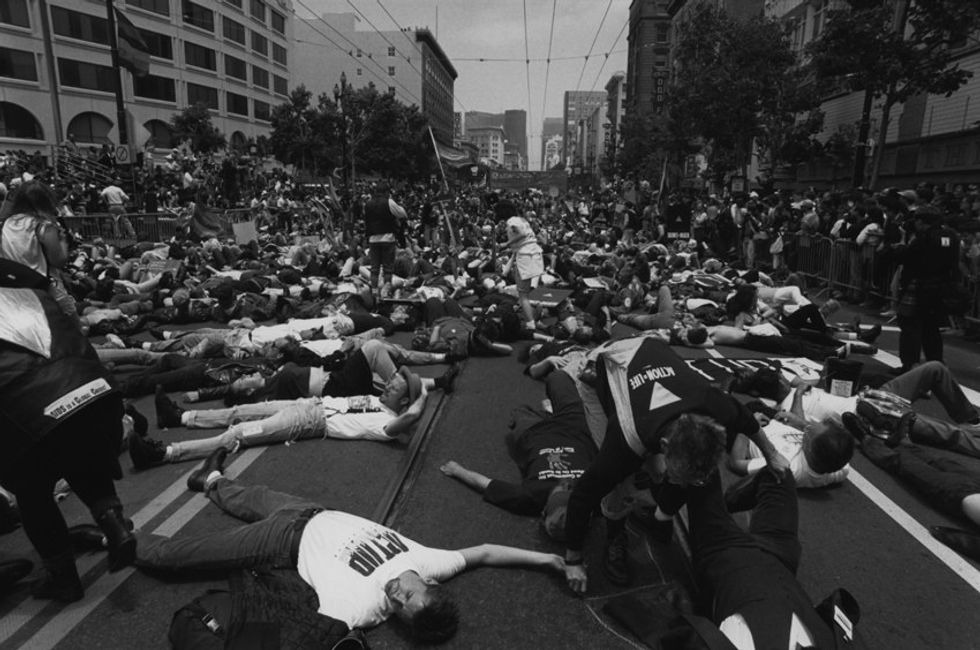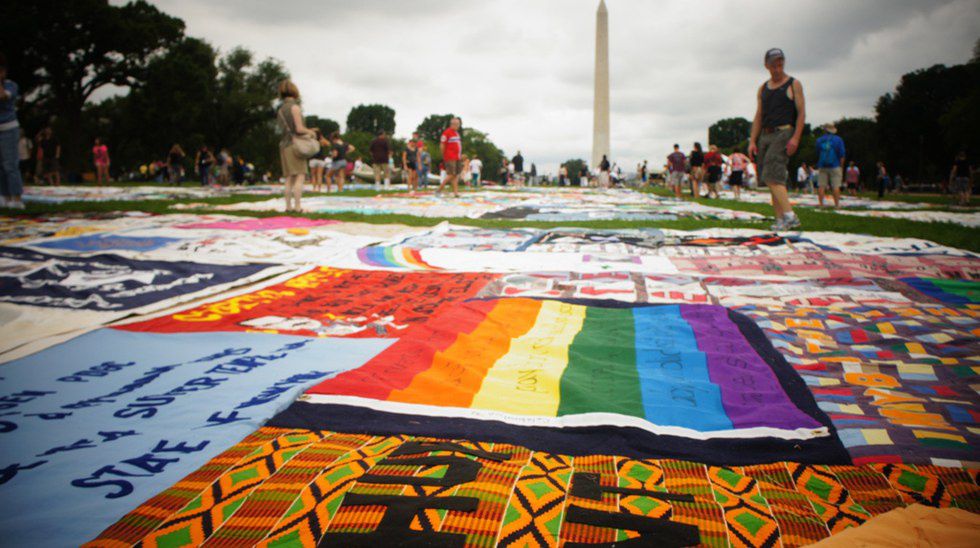"The question is what does a decent society do with people who hurt themselves because they're human; who smoke too much, who eat too much, who drive carelessly, who don't have safe sex? I think that the answer is a decent society does not put people out to pasture and let them die because they've done a human thing." - Bob Rafsky, AIDS Activist
In 1981, on July 3rd, The New York Times reported on a "rare cancer seen in 41 homosexuals" that would quickly multiply at alarmingly high rates, and later be known as AIDS. In 1981, no one knew the cataclysm that would come in American society. At the end of 1981, the number grew to 270 reported cases, and "gay cancer" became a common term.
In 1981 it was still called Gay-Related Immune Deficiency, and it wasn't until September of 1982 when the virus was called Acquired Immune Deficiency Syndrome. At this point in 1982, 8 million dollars of government spending was dedicated to HIV and AIDS research.
The Headline in 1981 from The New York Times
By 1986 U.S. government spending increased to 508 million dollars on AIDS research and care. However, in 1986 the government spending on health care overall was 159.7 billion dollars. There were 28,712 cases of AIDS reported at the end of the year to date, and 24,559 deaths, in the U.S. 508 million dollars is a small fraction of 159.7 billion dollars, and one would argue that the rest of the government spending on healthcare was spread evenly towards other disease research, but in reality it was not spread evenly despite the alarming increase in AIDS cases and deaths.
The 771 reported cases to date at the end of 1982 to the 28,712 is a 3623.99% increase in reported cases. The government spending on AIDS increased every year, but the 508 million dollars of the 159.7 billion dollars on healthcare is only 0.0032%.
In the first comprehensive report on AIDS, the Institute of Medicine stated that $2 billion was needed annually for AIDS research and care. AIDS research was funded, but ten years after the first 41 reported cases, there was still 206,563 cases of AIDS reported to date and 156,143 deaths.
An AIDS patient in the 1980's before treatment was available.
On top of the subtle government funding, the pricing for treatment was incredibly high. In 1987, AZT was the only drug approved for use against AIDS, but it was priced at $10,000, but later on decreased to $8,000. It was priced this high because of alleged other rival drugs that were coming out (in 1989, two years later, no new "rival" drugs were released).
Thousands in the U.S. were infected, but millions worldwide were infected by the 1990's. The numbers were increasing, and so were the deaths. As the more infected people died, the worse the plague spread and the greater the anger grew.
Why was the funding for AIDS research and care minimal compared to other healthcare funding despite the growing plague? Why did it take so long for people to retrieve affordable treatment from a fatal disease? More importantly, why is AIDS history not properly taught in most schools?
I learned a few things about AIDS when I was in middle school and high school, but for a long time it was taught as though people with AIDS couldn't live past a year or two, and that there was no treatment. We didn't learn about AZT, Protease, or any possible treatment, so we especially didn't learn about how unaffordable those treatments originally were.
They also never taught us why gay men are at a higher risk for AIDS. They never taught us how the epicenter of the virus was a gayborhood in New York City, and there were some people I knew who didn't think you could contract AIDS if you weren't gay or sharing needles.
AIDS activists protest for more AIDS research and care.
Most importantly, they didn't teach us about the thousands upon thousands of people in America who could have lived if the government and society hadn't been blatantly prejudiced. Yes, there was funding, but it wasn't nearly enough. Yes, there were eventually drugs to help, but they weren't affordable.
They also didn't teach us about the people who saved thousands upon thousands of people in American by the simple drive to survive. ACT UP, the AIDS Coalition to Unleash Power, was an AIDS activist group that got the government to take more action, that made drugs more affordable, and that changed the way people took action.
The documentary How to Survive a Plague portrays the ways that ACT UP made a huge difference in America, but this is a difference not taught in schools, or at least not as much as needed. In my high school career, we didn't touch on the 1980's or 1990's as much as we should have, and I hope that today's students learn about the incredible impact that the AIDS activists had on American society.
AIDS activists perform a "die-in demonstration" in the streets of NYC.
Representation is vital for proper education. If history is taught but not properly represented, what did the students actually learn? It's important for history to be represented accurately and as thoroughly as possible. AIDS history has affected the world today, and it has played an important role in American society. The homophobia that delayed funding, research, and care for AIDS has affected more than just gay men -- it affected all demographics.
AIDS research is advancing every day and its history is slowly but surely becoming more prominent in the education system and mass media. For example, a new genetic analysis of stored bloodwork showed that the strain of HIV most commonly found in the U.S. was brought to New York in 1971 - ten years before The New York Times ever reported on a "gay cancer." This is vital information for AIDS history as there is still a misconception about gay men being the only ones who can get AIDS, and the "Patient Zero" fiasco that blamed one single man for bringing AIDS to the U.S.
AIDS history is a part of American history, and when the American Education System doesn't fully represent history then we are not getting the education we need or the education we deserve.
The AIDS Quilt is set out in Washington D.D., with thousands of panels dedicated to commemorate people who have died of AIDs.
Thousands of people in the U.S. have died because of AIDS. How many people would be alive if our society hadn't put people out to pasture and let them die for doing a human thing? AIDS history isn't just important because it's a part of U.S. history, but it's important because it's influential in today's society. Most of all, it's important to remember the people who lost their lives and are still losing to this plague, and to remember the heroes who came forward and changed history by doing beautiful, human things.


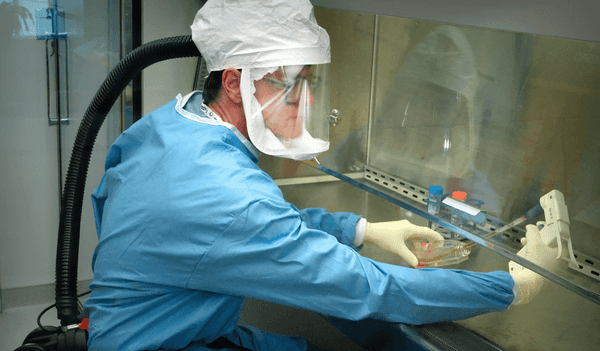

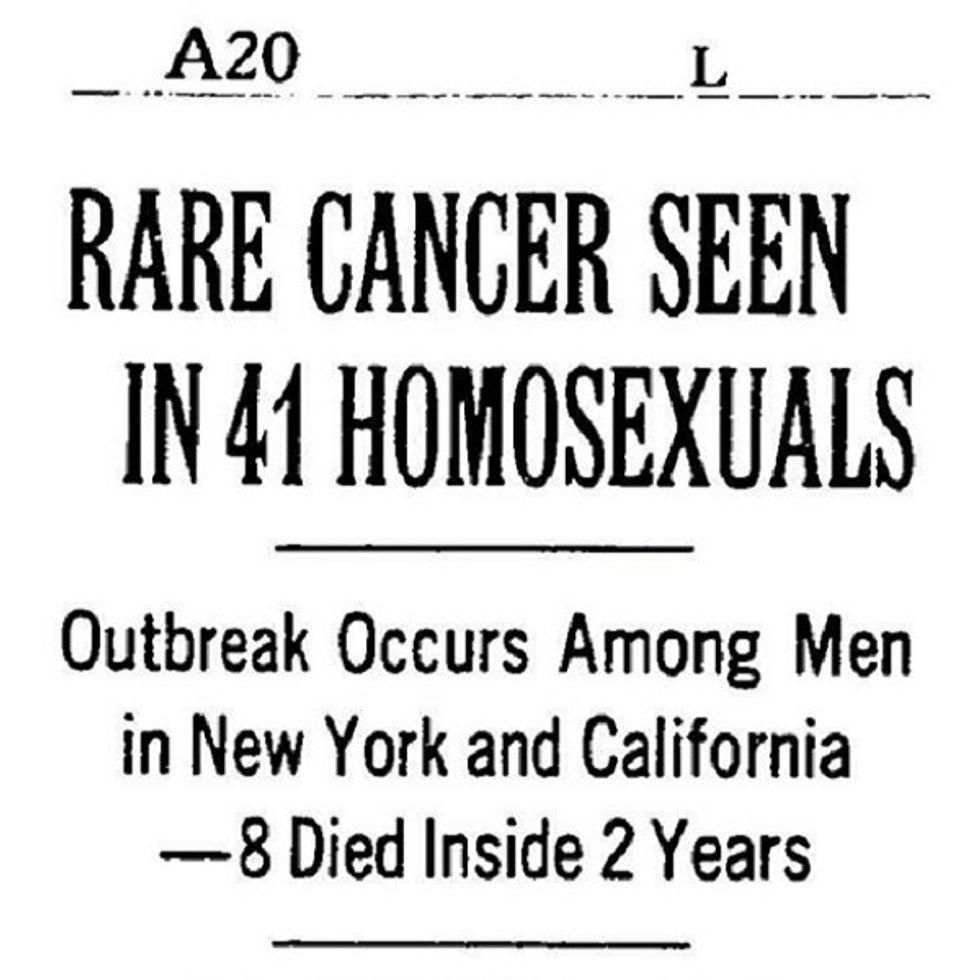 The Headline in 1981 from The New York Times
The Headline in 1981 from The New York Times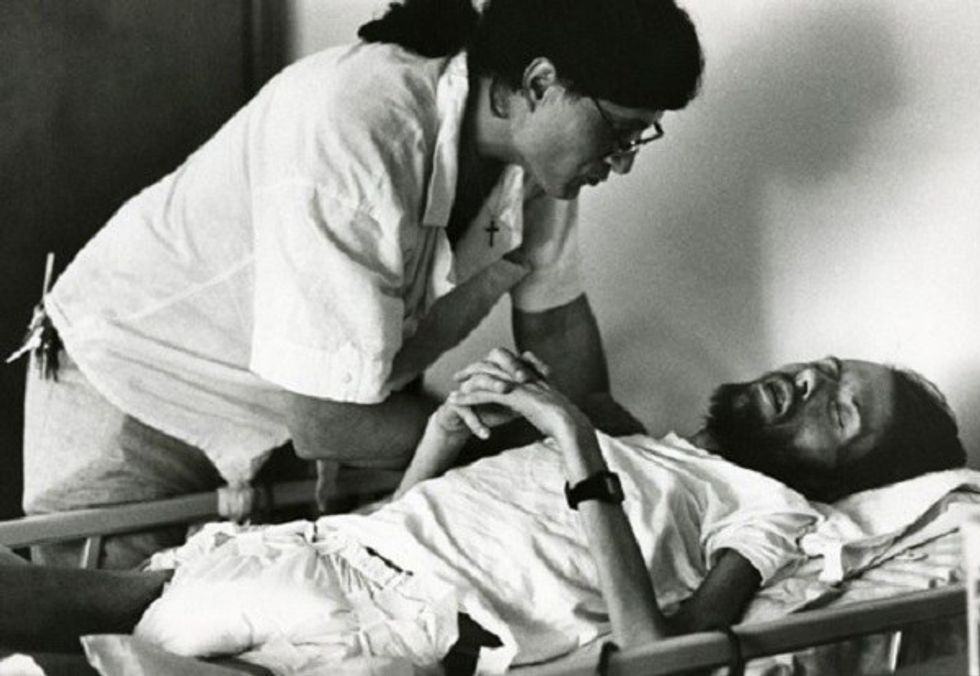
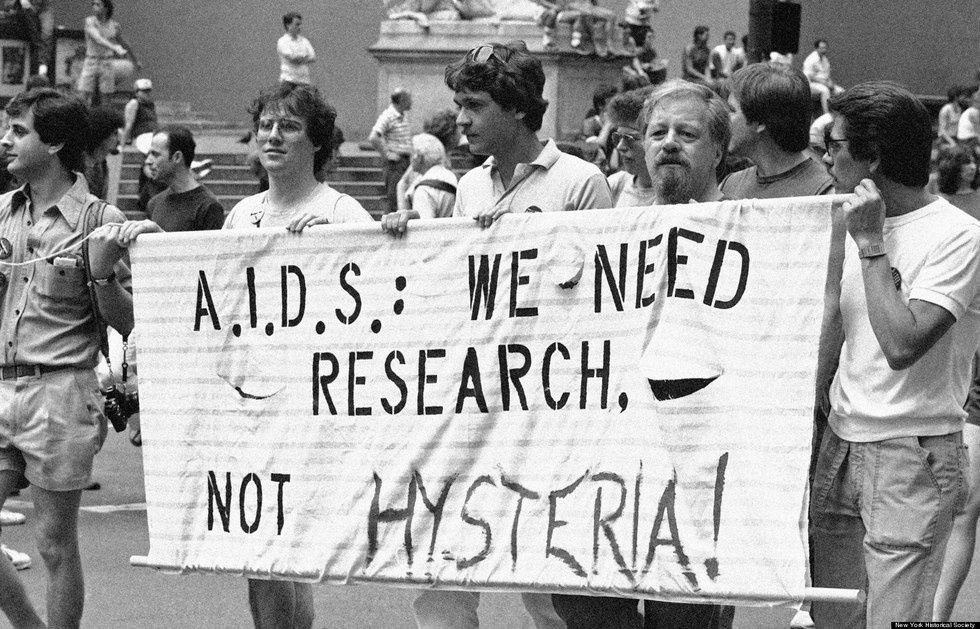 AIDS activists protest for more AIDS research and care.
AIDS activists protest for more AIDS research and care.